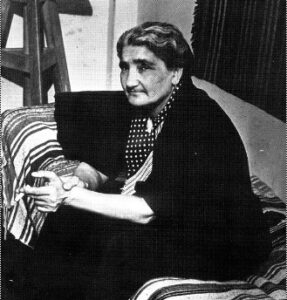Manouche Gypsies – Gitans – Tziganes – Sinti – Manouche from the Romany – Roma
The people I refer to as “Django’s Gypsies” are those Gypsies living in France, Germany, Belgium and Holland. It is upon these people that Django Reinhardt has had the strongest impact. They can be divided into two main tribes: The Manouche (known as the Sinti in Germany) and the Gitanes. Perhaps the biggest distinction between the two tribes is geographical. Like all Gypsies, the Manouche originated in India. They then traveled through the Middle East and took a Northern sweep up into Europe. In contrast the Gitanes came up through Southern Europe and Spain.
Because of their Eastern origins, natural digital and mental dexterity, and exposure to the cultures of numerous countries encountered on their travels, the Gypsies have for centuries formed a gregarious musical subculture which has encompassed many influences. The folk music of any area in which the Gypsies lived would be immediately improvised upon, and then assimilated, in a most exciting and original way, into their own music. As a result the Gypsies were usually the most sought after musicians in many parts of Europe by the ruling classes. Russian Czars, Hungarian despots and wealthy businessmen all hired legendary violinists, such as Sandor Nemeth, Janos Bihari and Pista Danko, to play for them. Great classical composers, including Liszt, Kodaly, Bartok and Tchaikovsky, all found inspiration from Gypsy virtuosity.
The name for Gypsies as a race varies from country to country. For example: Tsigane (France), Ziguener (Germany), Cigani (Turkey). Their common language is Romany, which again has different dialects according to their country of abode. Sadly the use of the Romany
language has dwindled amongst the present generation of Gypsies. Similarly, the old life. the style of horse-drawn caravans has almost died out with the onslaught of modern motorized transportation. In Western Europe the majority of Gypsies live in modern caravans, which more and more tend to be parked on a permanent site. The most successful Gypsy musicians now tend to live in houses or apartments, not least because this provides a better base from which to work in clubs and bars.
Django Reinhardt was a Manouche, but he often used Gitane rhythm guitarists, despite the fact that traditionally the two tribes had not mixed. The original Hot Club Quintet always had two rhythm guitarists and, except for Roger Chaput who appeared on the very first records, they were always Gypsies. If we examine the time when Django first heard jazz, through the records of Louis Armstrong and Duke Ellington, we can see how naturally he claimed this music as his own. He embroidered his own melodies into the original themes, just as his ancestors had done for generations. In this way Django Reinhardt set in motion a wide-ranging influential effect which has culminated in the musical style of the many Gypsy jazz guitarists on the international scene today.
To observe the Gypsies in their daily life helps one more fully understand Django’s music, and the intricacies of his character. All the elements are there: closeness to Nature; freedom of spirit; quickness of the mind; instant appraisal of people and situations; central importance of family life and love of children; manual dexterity; age-old skills of improvisational survival and-above all – a great love of music.
IAN CRUICKSHANK




